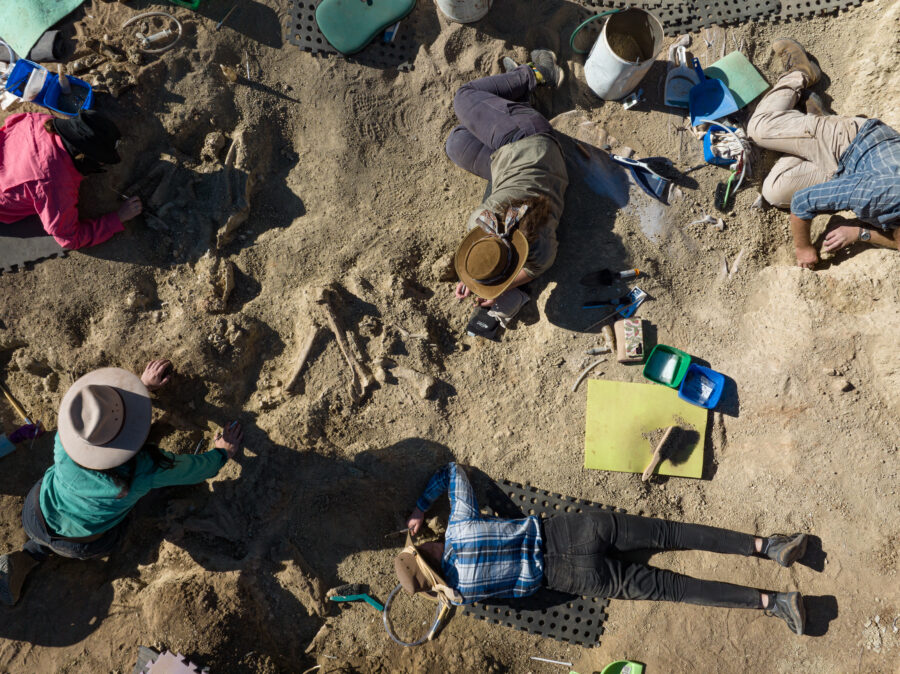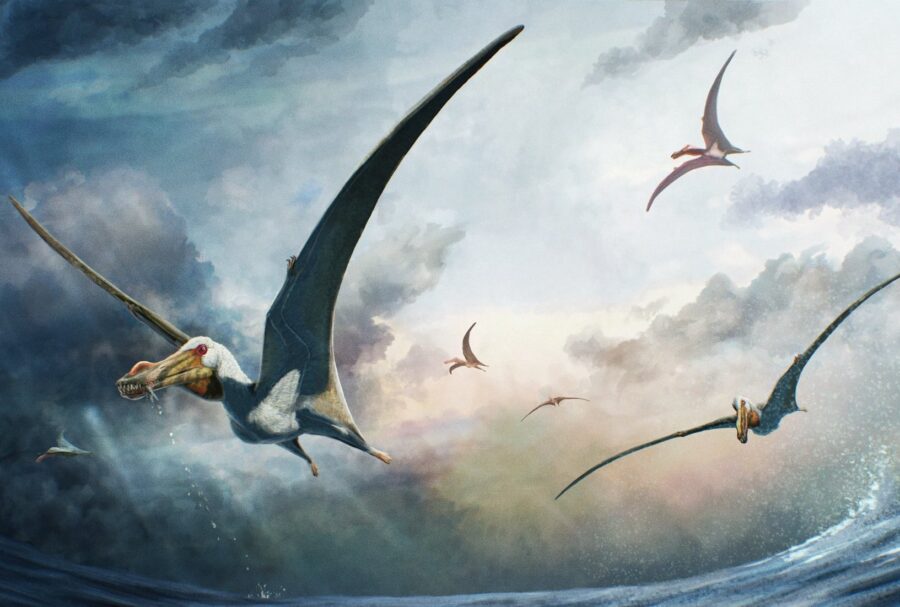Stunning specimen of rare ‘demon duck’ fossil unearthed in Australian dig

Paleontologists digging at Alcoota Scientific Reserve in the Northern Territory have uncovered a near-complete fossil specimen that includes the leg, foot and toe bones of an Ilbandornis – an ostrich-sized flightless bird from the bird group known as thunder birds or demon ducks.
The femur, ankle and nine toe bones were fully articulated – lying connected in the same position as when the animal died.
Finding an articulation like this is rare at Alcoota, where bones usually lie scattered in a random jumble.
Rich fossil field
The Alcoota site is about 150km northeast of Alice Springs and is the size of two football fields.
Concentrated inside its fossil beds are tens of thousands of bones, from thousands of individual animals, that died some 8 million years ago.
Widely regarded as Australia’s richest terrestrial vertebrate fossil site from the late Miocene, Alcoota has been excavated on-and-off since the 1960s and continues to deliver surprises.
“It seems no matter how much we dig there, there’s more to come,” Dr Adam Yates, senior curator of earth sciences at the Museum and Art Gallery of the Northern Territory (MAGNT) told Australian Geographic.
“This is the thing about Alcoota: once you start excavating one thing and start clearing around it, you find more things. It’s like a game of pick-up sticks in some ways.”

The extraordinary new articulation was found in a pit known as ‘Classy Corner’, which was opened at the beginning of MAGNT’s 2024 dig.
Lying close to the articulation is a shoulder joint and vertebra belonging to the same species.
“There could be a skeleton that belongs to one individual,” Adam said. “That’s really significant because there’s more than one [Ilbandornis] species and associating particular bone types with each particular species can be quite tricky.”
Ancient family of huge birds
The birds known as thunder birds or demon ducks belong to the now-extinct family Dromornithidae.
Many examples of this ancient group have now been excavated at Alcoota, including Dromornis, which weighed an estimated 600kg and stood 2–3m tall, making it the largest bird species to ever roam Earth.
This family of huge flightless birds first appeared in the fossil record about 55 million years ago, until their extinction some 50,000 years ago.
More than 30 mammal, bird and reptile species are represented at Alcoota, including marsupial “rhinos” (diprotodontids), short-faced kangaroos, crocodilians and fearsome marsupial lions the size of a leopard.
These animals are the evolutionary ancestors of the Pleistocene megafauna that lived alongside the First Australians.
Paleontologists once thought the Alcoota fossils were the remains of animals that gathered around a surviving waterhole during a years-long drought.
But recent evidence that the animals were in breeding condition when they died has cast doubt on that hypothesis.
Now, Adam speculates they were killed in a flood.
“[After drowning], their carcasses drifted downstream and banked up at one spot, maybe a bend in the river or something like that. And that’s what we’re digging through, it’s just a giant pile of carcasses that piled up after a flood,” he said.
Read more about searching for Aussie dinosaurs in the next issue of Australian Geographic, available on newsstands and online from September 2024.


